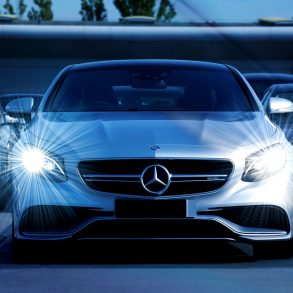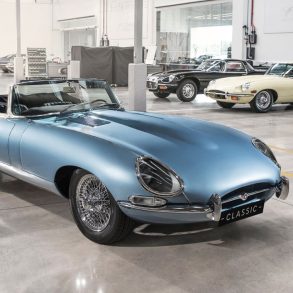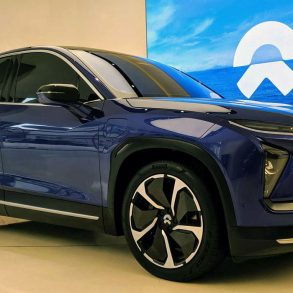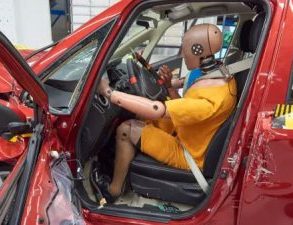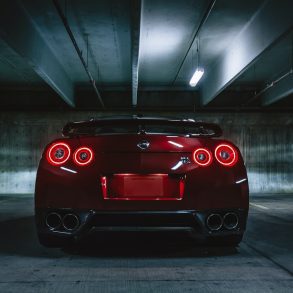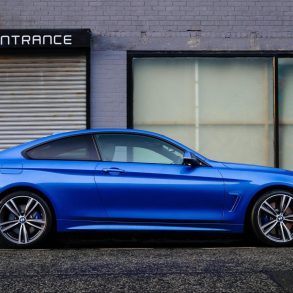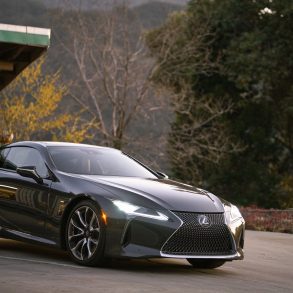By Jean-Philippe Launberg, and in partnership with Escopo Automotivo.
Months ago I wrote about China’s domestic OEMs fast evolving automotive design capabilities (see Chinese Cars: Just Copycats?).
This time I want to highlight another developing aspect of the Chinese market: foreign brands are now frequently designing cars exclusively for the China. This is an expensive practice, but one that is justified by the market size, particular tastes of (some) Chinese customers, and the business dynamics between these brands and their local joint-venture partners. As an example, the domestic Compact Car segment is so large, that by itself it would rank among the 5 largest car markets in the world. This means automakers have to cater to large and diverse customer groups; hence the opportunity for several models from individual brands to effectively compete in it.
One may start thinking of how some of the China-exclusive models might fare if exported or produced abroad, which is exactly the point I would like to open for debate today. Certainly it would be no hardship to export into Emerging Markets; China’s regulations, environmental and usage requirements are as strict ― or stricter ― than most, so changes would be few and small in scope (with the exception of right-hand drive conversions). For Developed Markets, some extra engineering might be required to comply with safety regulations and requirements, but since many of the China-unique models are based on global platforms, it should be quite feasible. I suspect the greatest challenge is that these models are Made-in-China, which is a pity as the design, development philosophy and practices, as well as the quality and sophistication of tools and equipment are far more important than the country of manufacture. Chinese plants, for example, are among the newest in the world, and well-equipped given the massive recent investment. It’s a pity potential international customers are still locked in the old paradigm, but perceptions do matter. I have no qualms about buying a Chinese-made BMW, Honda, etc. I would even seriously consider some of the latest domestic brand products from Geely, BYD, Haval, Roewe and others.
Moving on, here are some interesting foreign brand ― in alphabetical order, not importance ― models made exclusively (at least so far) in China and for China. Let us know, by commenting, if you believe any of them would have appeal outside of China.
Citroen C6
Its previous generation was built in France to compete in the European executive market. As with other volume brand’s executive entries, it was “crowded out” by the luxury German models from Audi, BMW and Mercedes-Benz. The new C6 looks like it will be manufactured only in China, off the PF3 platform. Although the Chinese market is maturing fast, Citroen clearly believes there is still a chance to make a mark in the local business market dominated by the Honda Accord, Toyota Camry, and the VW Passat and Magotan.
It will come with a (again) China-only 1.8-liter turbo “Prince” engine,(with a likely hybrid version later on. The new C6 will be unveiled this April at the Beijing Motor Show. This time around it will be a more conservative notchback than the more daring design of its previous generation.
There is already solid information that the C6 will be the baseline for a larger DS sedan — the DS 9 — but no teaser images have been released so far.
The premium DS brand from PSA has at least as much focus on China as it has in Europe. In addition to the DS 3, DS 4 and DS 5 hatchbacks available in Europe, it has expanded its portfolio with 3 dedicated and locally-produced products designed to appeal to the Chinese customers.
DS 4S
This just-launched compact hatchback does not share the international DS 4 (without the “S”) crossover-ish proportions, and neither its polarizing design. The DS 4S looks (in my eyes at least) substantially more dynamic and appealing. The DS 4S shares its PF2 platform and powertrains with the DS 4 though, meaning engines of up to 200 hp. Pricing hasn’t yet been announced, but it will be much lower than the imported DS 4, a car it will effectively replace in China, rather than complement.
It’s debatable the wisdom of selling a relatively pricey hatchback in China, given its historical preference for notchbacks, but there are success stories such as the Buick Verano GS (i.e. Opel Astra), VW Golf, Ford Focus, etc., especially in Tier 1 markets (the big cities). Proper positioning and communication is paramount, nonetheless
DS 5LS
It’s the first China-unique DS model, and it is a more conservative compact-plus sedan than the “avant-garde” ― and beautifully-styled ― DS 5 hatchback. The 5LS shares the latter’s PF2 platform, but it is longer given its bodystyle. It is also priced significantly below (around 25%), aimed at a different set of customers. It comes only with the smaller (1.6-liter) turbo “Prince” engine, though it is tipped to soon get a turbocharged 1.2-liter “EB” engine to enjoy lower taxes in China. The DS 5LS is an alternative, for buyers looking for a sportier and stylish “personal” sedan, to the Buick Verano, VW Lamando (see more below), and entry-level versions of the Honda Spirior.
DS 6
Not to be left out of the Chinese SUV “boom” (which is growing at a rate of approximately 60% annually), and to leverage its less brand loyal customers, DS launched in 2014 the compact DS 6 crossover. It will surely become DS’s best-seller and profit-maker in China for the next few years. It continues the platform-sharing strategy with the DS 4S, DS 5 and DS 5LS, and as a consequence no all-wheel-drive version is available ― which could limit its credibility. The DS 6 competes for customers with other more dynamic compact crossovers such as the Ford Kuga, Mazda CX-5 and entry-level versions of the Buick Envision (itself a China-only product, but that will soon head to the USA).
Ford Escort
This Ford nameplate has last been used at the turn of the century, replaced then by the progressive 1st generation of the Focus. Driven by the relatively high design cost of the current (3rd) generation Focus, Ford decided to re-body the 2nd generation, creating the 2015 Chinese Escort. It neatly bridges the price gap between the sedan versions of the Fiesta and the Focus, targeting less well-endowed and traditional families (mostly) looking for their first new car, room for 5 people and luggage, and the image afforded by an international brand. The proof that the formula works is that, in its first year on the market, the Escort sold more than 200,000 units.
Ford Taurus
A traditional American fullsize car brand has been re-invented and introduced to China last year. It follows a similar strategy adopted by GM and its Epsilon platform, available in regular and long wheelbases. The Taurus makes do with a longer and wider derivative of the Fusion/Mondeo CD3 platform. Nonetheless, it’s about 200 mm shorter (despite an 80 mm wheelbase increase) and near 100 kg lighter than the USA model. Despite the new brand, and the mainstream image of the Ford brand, it is already into a good fight with two traditional nameplates in China: the Buick LaCrosse and the Toyota Crown. There is no indication that this latest Taurus will be soon going to other markets.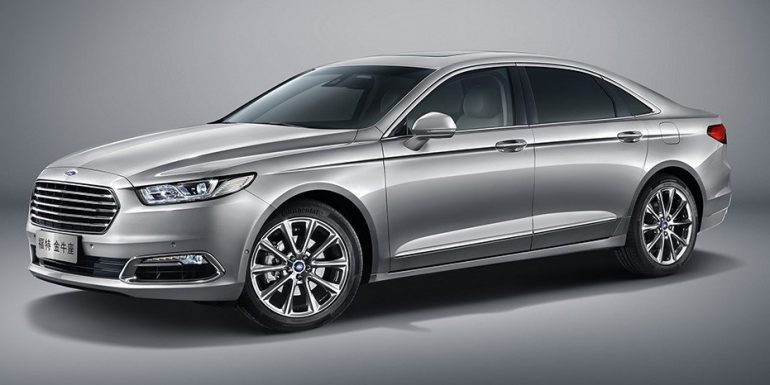
Hyundai Mistra & KIA K4
The Mistra is wooing new customers by the boatload by offering them outstanding value-for-money: near-Sonata size and roominess for near-Elantra price and running costs. Sounds simple, but not many automakers managed to pull it off as well as Hyundai did. In 2015 they sold 155,000 Mistras in China, more than twice the number of Sonatas. I wonder what is preventing Hyundai from selling it in other markets (especially emerging ones, read Suggestions for Hyundai to Keep on Growing) around the world where the Sonata is unsuccessful due to its price.
The concept worked so well that the Hyundai Group created an equivalent car for KIA ― the K4 ― sharing the Mistra platform and mechanical bits … and conquering an additional 62,000 customers last year.
KIA KX3
The 4.3 meter long KX3, launched in March 2015, is KIA’s entry into the hotly-contested small crossover segment. It is also a sister-car of the Hyundai ix25, which until its recent launch in India as the Creta, was also a China-only model. The KX3 comes only as a front-wheel-drive, but brings as an option an interesting ― for a car of this size ― 1.6-liter 160 hp turbo engine and 7-speed DCT. It competes directly with the Chevrolet Trax, Ford EcoSport, Honda XR-V and Hyundai’s own ix25. Last year, the KX3 and ix25 duo sold 150,000 units in less than a full year in the chinese market. Interesting to note that the KX3 was the first model to adopt KIA’s latest SUV design language, more recently introduced globally with the 2016 Sportage (KX5 in China).
Mazda CX-4
Mazda is getting ready to launch this compact coupe-ish crossover later this year. There is no indication yet that it will be produced elsewhere other than China, but I believe it is more likely than not that it will be at least exported. Although sleeker-looking (basically a tamed version of the Koeru concept car) and slightly longer (preliminar information) than the CX-5, it is yet uncertain how it will be positioned; the CX-4 nameplate suggests it will be priced lower than the former. Looks promising!
Nissan Lannia
This aggressively-styled compact sedan ― targeting people (I suspect men) in their 20s and 30s ― was designed in China, and has been in the market for only about a quarter. Regardless, it is already Nissan’s 2nd best-selling sedan in the country, after the Sylphy. The Lannia is priced a bit lower than a Chevrolet Cruze and Ford Focus, and only comes with a 126 hp 1.6-liter engine.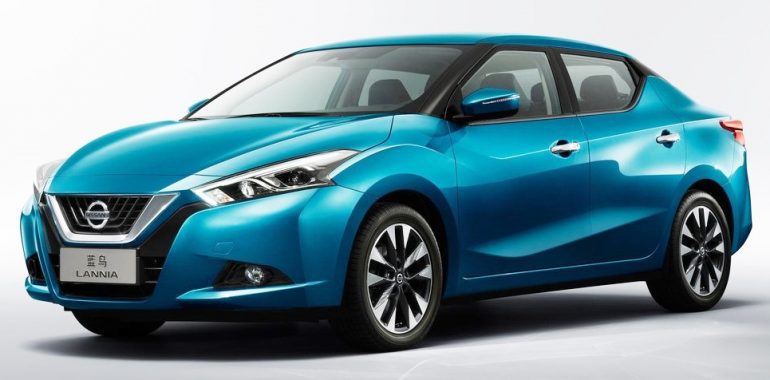
Volkswagen has so far been the most active OEM designing cars just for China; and they have been successful at that.
VW Lavida & New Bora
One of them, the Lavida (in both notchback and hatchback body styles), is China’s currently best-selling passenger car with in excess of 470,000 units sold last year. It is based on a refreshed and stretched PQ34 (i.e. 1998 VW Golf) which also underpins other China-only VWs such as the 2013 New Bora (familiar name, different car), which generated another 200,000-plus sales in 2015. The point is, VW has to serve both its joint-ventures, the Lavida being built by Shanghai-VW, and the Bora by FAW-VW.
VW New Santana
Another VW so far limited to China is the new Santana. Once more, a heritage-laden nameplate re-invented over a (see the trend?) refreshed and stretched PQ25 (i.e. 2009 VW Polo) platform. The Santana (from Shanghai-VW), like the Lavida, also comes in a station-wagon/long-roof hatchback bodystyle with the prefix “Gran”. Together they sold 266,000 last year.
If you are having trouble telling one apart from the other, don’t worry, as you are not only one. The differences are a little more evident in person, but the key point here is that people are buying a VW, and the “safety in numbers” appeals to many. Although unexciting, these cars are hugely important from a business perspective.
Of much more interest are the VW Lamando and the recently unveiled Phideon.
VW Lamando
The Lamando is an elegant, yet jovial, compact sports sedan built on the MQB modular platform which also underpins the latest VW Golf, Audi A3, etc. Think of it as a small brother to the coupe-ish (Passat) CC. It is manufactured by Shanghai-VW and has been a resounding success, finding 104,000 buyers in its first year. I sincerely think VW should leverage it around the world. It comes with 1.4-liter and 1.8-liter TSI engines, and soon a GTS version will arrive with the 220 hp 2.0-liter motor that powers the VW Golf GTI, and styling upgrades.
VW Phideon
FAW-VW has for many years done a roaring trade ― and profit ― with locally-produced Audis (A3, A4L, A6L, Q3 and Q5), surpassing the half-million annual sales (one-third were A6Ls) mark last year. In the meantime, Shanghai-VW priciest offerings was the Passat, and it is safe to say they made sure Wolfsburg wouldn’t forget about it. Worry no more! Later this year, deliveries of the new Phideon premium sedan will start. This new sedan measuring over 5 meters long is built on the new MLB platform that will also underpin the new midsize and large Audis. Prices have not been announced yet, but it is likely the Phideon will be cross-shopped with high-end versions of the Toyota Crown and Buick LaCrosse, as well entry-level versions of the Cadillac XTS, and Lexus ES.
Have a nice week!
Sources: carnewschina.com; chinaautoweb.com; Google Images; OEM websites; netcarshow.com; pcauto.com.cn

